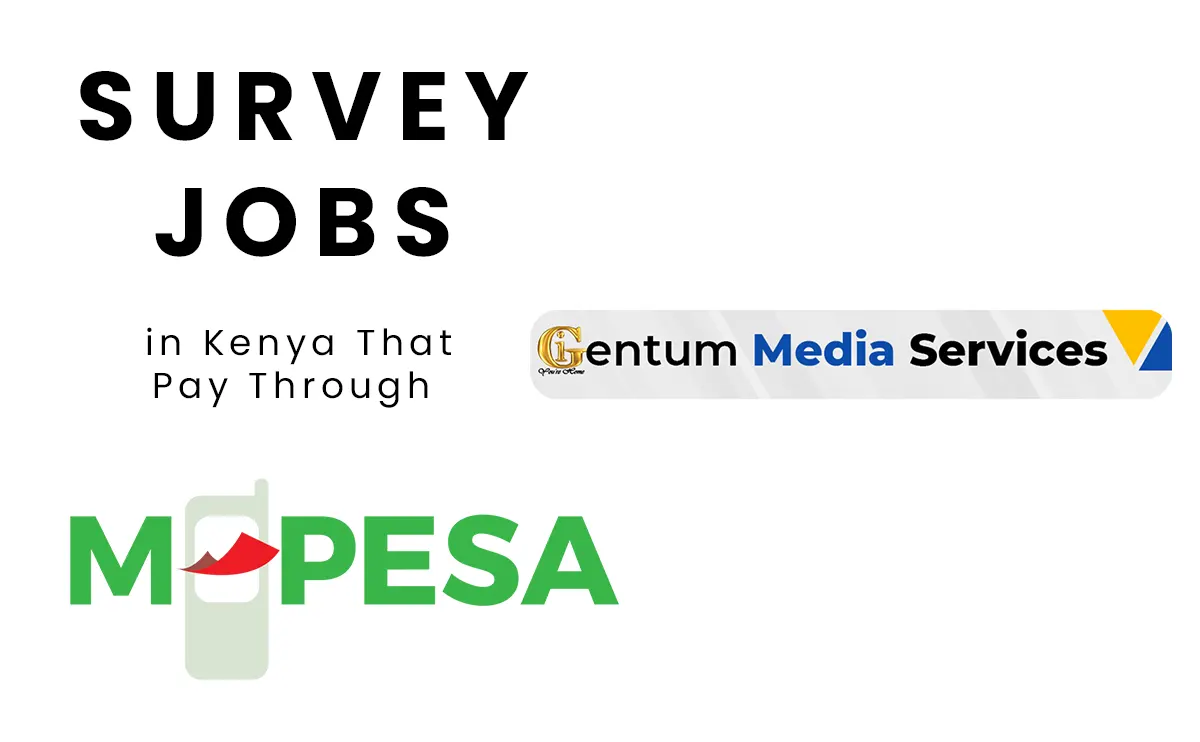
by admin | Nov 30, 2022 | news
Hustler Fund is one of the biggest promises made by the Kenya Kwanza administration during their campaign. The president H.E. William Samoei Ruto has today launched the fund. This, is something to celebrate. isn’t it? Well, this is what you need to know about the hustler fund.
What is Hustler Fund?
Hustler Fund is a digital financial inclusion initiative designed to improve financial access to responsible finance for personal, micro, small, and medium-sized enterprises (MSMEs) in Kenya.
How to Access The Hustler Fund Loan
According to the Ministry of Cooperatives and MSME Development, borrowers will be able to apply for the Hustler Fund loan through USSD code *254# and on the mobile apps of Safaricom, Telkom, and Airtel.
To register an account on the platform, a customer is required to sign up for the fund through the USSD code *254# or the mobile app. They will then be required to accept the Terms and Conditions to join the fund. Thereafter, enter their mobile money pin.
Upon fulfillment of these steps, an SMS will be sent to notify them of their successful registration and the limit assignment.
In the event of a failed registration, the borrower will be notified via SMS.
When the customer borrows, the approved loan will be disbursed to their mobile money account where out of the total approved loan amount, 95% shall be deposited to the mobile money wallet.
How To Increase Loan Limit on Hustler Fund
The loan limits for Hustler Fund will be a minimum of Ksh. 500 up to a maximum that will be determined by the borrower’s credit score and capped at Ksh.50,000.00.
The loan limit of a borrower has the ability of rising to a higher amount depending on their behaviours in borrowing and repaying.
“The limit shall be reviewed and adjusted based on the borrowing and repayment history of previous Hustler Fund loans taken.” The ministry of Cooperatives and MSMEs says.
Therefore, borrowers are encouraged to continue using Hustler Fund and pay their loans on time.
Assessment of credit history on subsequent loan applications and repayment shall apply to determine subsequent qualifications for the facility.
Read also: Survey Jobs in Kenya That Pay Through Mpesa
What Happens If You Fail to Pay The Loan?
In case a borrower does not repay the loan within the set 14-day period, a loan recovery and collection process will be initiated.
Before the repayment, one will not be eligible to apply for another loan.
There will be penalties imposed on the defaulters where 15 days after the date of default. The interest rate will be adjusted from 8% per annum to 9.5% per annum.
We really hope you learned what you need to know about the Hustler Fund. However, by the time of publishing this article, the service is not yet live.
Our Services
Gentum Media Services offers state of the art Web Design and Development, Web Hosting Services, Digital Marketing, Corporate Branding and Social Media Management.
Talk to us today and let us discuss your big project.

by admin | Nov 19, 2022 | Online Jobs In Kenya
Survey Jobs in Kenya That Pay Through Mpesa are on the increase recently. Kenyan survey jobs are some of the best paid jobs in Kenya. You can earn anywhere between Kshs 100-1000 per day depending on the job. Most people who do these jobs have been doing them for years and they know what they are doing. If you want to make money fast in Kenya then this is the right place for you. Here are some of the most popular ones:
Mobrog
At MOBROG® you can actively participate in market research, give your opinion and earn money by taking part in online and mobile surveys. If you want to make money fast in Kenya then this is the right place for you. You can access their site and then register to be receiving surveys once available. Use the link here to register for free. You may also download their app to enjoy the services.
Surveyeah
Learn how to earn money on the Internet or how to save money while maintaining the same lifestyle. Lots more interesting news, intelligent solutions and entertaining videos are awaiting you. Register for free here to get started.
Triaba
Join Triaba today and earn up to $3.25 for each paid online survey you complete. You can start claiming your rewards after accumulating just $10 in your account, so you don’t have to wait too long before claiming your money. Register for free here.
Read also: Check Out These Online jobs that pay through Mpesa in Kenya.
GeoPoll
GeoPoll has experience administering remote, mobile-based surveys all over the world. We have completed surveys in more than 85 countries in Africa, Asia, and Latin America, manage call centers in over 60 countries, and can conduct research via select modes in nearly any country in the world. Register here to get started.
Paid Viewpoint
This platform has a number of surveys which you can get by logging to your account as frequent as possible. The beauty is you can register free of charge. Alternatively, you can share your email address to be receiving open gigs as they are available. Register here to get started.
Disclaimer
This site has no affiliations with any of these survey jobs in Kenya that pay through Mpesa. We also DO NOT OFFER these services. This article only gives you an overview of some of the most common paying online jobs in Kenya. The content is to help expose job seekers to online job opportunities.
Our Services
Gentum Media Services offers state of the art Web Design and Development, Web Hosting Services, Digital Marketing, Corporate Branding and Social Media Management.
Talk to us today and let us discuss your big project.

by admin | Nov 13, 2022 | Inspiration, news
Humility is one of the most important virtues we should cultivate in our lives. It helps us avoid pride and arrogance. We often think that humility is something that only comes naturally to others. But, it’s not true. You too can develop an attitude of humility. You don’t have to be perfect to get things done.
And no one deserves less respect than anyone else.
If you treat others with respect, they will return the favor. You’ll find that when you show respect, people respond positively. Respect others by treating them with kindness and respect. This includes respecting yourself too.
A must read: The New Uhuru Bags & How to Get Them Cheaply.
Analogy of the Great Lion
No matter how long he lives, the greatest lion will eventually die & probably a miserable death. At their peak, they rule, chase other animals, catch, devour & gulp them leaving their crumps to hyenas. However, age comes fast. When it does, the old lion is unable to hunt or kill their prey, neither is he able to defend himself. He roams and roars until he runs out of luck. He will be cornered by the hyenas, nibbled at and eaten alive by them. Sadly, they won’t even let him die before he is dismembered.
Read also: Marketing That Suits Your Business
Humility is not Weakness – Why it Pays to Be More Humble in Life
Life is short. Power is ephemeral. Physical beauty is short-lived. This is clearly seen in lions and the same can be said of people, no matter how powerful they might have been or perceived to be. Treat people well. Respect everyone. Do not cause fear in people with your position of influence or otherwise. The biggest test of a person is how they treat people below them, say a subordinate or a support staff in your place of work. Treat them with the same respect you would treat your MD or CEO or your boss for that matter.
Therefore, let us all be humble. Help the sick if you can, support the needy if in position to lend a hand, especially if you know they can never repay the favor accorded to them. It pays to be humble in life. Always.
Also read: How to Login, View & Download TSC Payslip Online.
Above all, never forget that we will all leave the stage at some point. All is vanity.
Thank you for taking time to learn why it pays to be humble in life. Now, check out our business support services that includes Digital Marketing, Web Design, Social Media Management among others. Let us discuss how we can get the most suitable on for you and your business.

by admin | Nov 13, 2022 | Web Hosting
Web hosting in Kenya is an important aspect of running a website. We’ll explain what web hosting is, why it’s so important, and how to choose the right one for your needs.
What Is Web Hosting?
Web hosting is the process of storing information online. This includes everything from email accounts to databases. A web host provides space on its servers where you can store files and data. You can use these files to build your own website or simply upload them onto the web host’s site.
Every single website has some type of web hosting behind it, whether it’s a big website like YouTube or your friend’s knitting blog.
When you purchase web hosting, you’re essentially renting space on a computer. This could be part of a computer that you share with other people, an entire computer, or even space on a network of computers (AKA “the cloud”).
Once you have your website hosting, you can start putting it to use.
Common Types of Web Hosting Available
Now that you know what web hosting is, let’s go through the five main types of website hosting options available in Kenya.
All of these hosting types are fully capable of powering WordPress sites. However, some may be more suited to your WordPress site’s unique situation than others.
1. Shared Hosting
Shared hosting is where many people start their hosting journey because it’s one of the most affordable ways to host a website.
With shared hosting, your site/account will share resources with other accounts and websites on the hosting server — hence the name.
By sharing resources like this, hosting providers are able to keep their costs down and offer rock-bottom prices.
That’s really the only benefit of shared hosting — it’s cheap. Shared hosts also typically advertise high-resource limits such as “unlimited websites”, “unlimited storage”, and/or “unlimited bandwidth”.
Unfortunately, there’s no such thing as truly “unlimited” hosting and every shared host will still apply a “fair use” policy. But still, shared hosting can be a very affordable way to host multiple websites because of this.
While the low prices of shared hosting are attractive, there can be some very real downsides when it comes to performance, reliability, and security. For example, if the other accounts that you’re sharing resources with are consuming a lot of resources, that could have a negative effect on your site’s performance because there aren’t enough resources to go around.
For this reason, many people move beyond shared hosting once their websites start growing, as other types of hosting can offer major upgrades in key areas like performance and reliability.
2. Cloud Hosting
With cloud hosting, your website gets its own dedicated resources on a huge network of computers called “the cloud”.
That’s one of the key differences between cloud hosting and shared hosting — instead of sharing resources, you get resources that are 100% dedicated to your site. This generally leads to improved performance because you don’t have to worry about someone else’s websites affecting your site.
Cloud hosting also offers excellent reliability because there’s a network of computers powering everything, rather than a single point of failure.
It’s also easy to upgrade or downgrade your hosting resources because all the hosting provider needs to do is allocate your account more (or fewer) resources on the network.
Because of this, cloud hosting is one of the fastest-growing types of hosting. For example, you might’ve heard names such as Google Cloud Platform, AWS (Amazon Web Services), Microsoft Azure, DigitalOcean, etc. Those are all examples of cloud hosting providers.
Within cloud hosting (and many other types of hosting), you can further break the hosting down into two categories:
- Managed – the hosting provider will configure and maintain the basic server details for you.
- Unmanaged – you’ll be responsible for configuring and maintaining your server.
All things equal, unmanaged hosting will cost less than managed hosting because the host is offering extra services with the managed option (and those extra services cost more money).
In general, non-technical users will almost always want a managed solution. However, developers might prefer unmanaged hosting for added flexibility and/or cost savings.
3. VPS Hosting
VPS Hosting is a lot like cloud hosting. The main difference is that your site gets its dedicated resources from a single physical server, rather than “the cloud”. While you don’t get the whole server to yourself, the resources that are allocated to your site are 100% your own (unlike shared hosting).
While traditional VPS hosting used to be quite popular, it’s kind of taken a back seat now that cloud hosting has grown.
Most people will be better off with the cloud hosting approach because it offers more flexible scalability. That is, it’s easier to add more resources to your server if needed (or reduce resources).
Despite that, you still will see a good number of hosting providers advertising VPS hosting, so it’s worth knowing about this type of hosting.
4. Managed WordPress Hosting
Managed WordPress hosting is a special type of hosting that’s unique to the WordPress space.
You can host a WordPress site on all the other hosting methods, so this is definitely not the only way to host a WordPress site. However, unlike the other hosting types, managed WordPress hosting can only host WordPress sites, which can be limiting in some situations. For example, you couldn’t install your own self-hosted analytics tool (e.g. Matomo) to go along with your WordPress site.
It can use different types of hosting environments such as shared hosting, cloud hosting, and so on. In this way, managed WordPress hosting also isn’t entirely separate from the other types of hosting.
The key thing that differentiates it from “regular” hosting is a suite of concierge services that are added specifically for WordPress sites.
Typically, this includes the following types of services:
- Automatic daily backups, with the option to manually back up your site if needed.
- WordPress staging sites.
- Automatic WordPress updates.
- WordPress-specific performance optimizations, such as page caching and maybe a content delivery network (CDN).
- WordPress-specific security rules.
- Expert WordPress support.
The main benefit of managed WordPress hosting is convenience. You’re getting more than just web hosting, and those other services can save you time when it comes to maintaining your site.
The main downside, however, is the price. Assuming you’re talking about plans with identical resources, managed WordPress hosting will always be more expensive because you need to pay for those extra services somehow.
This means that managed WordPress hosting can be a good option for people who are willing to pay a bit of a premium for convenience and extra features.
5. Colocation Hosting
Colocation hosting is an advanced type of hosting that’s really only used by large businesses.
With colocation hosting, you physically own the hosting hardware. That is, you’ll actually purchase the hosting servers that you want to use. However, you rent space in another company’s data center to have that company power and maintain that hardware for you.
Basically, you get to keep using your own infrastructure but you eliminate the need to have your own physical space for that infrastructure (along with all of the associated costs such as electricity and air conditioning).
Again, this is not something a WordPress user will ever need, but it is a type of hosting that you might see, so it’s helpful to know this term.
Why We Are Your Preferred Partner For Web Hosting in Kenya?
While we offer you competitive rates, fast support and high uptime rates, we also offer domain names registration.
Domain Name Registration is the process of registering a domain name. Domains are how we identify websites online. When someone visits your site, they type in the address bar of their web browser what ever comes after the www. Your domain name is the bit before the www. We offer a wide range of sites in this category. Talk to us and let us discuss the best one for you.
Also read about 10 Questions You Should Answer on Web Design as you navigate through the web hosting options available in Kenya.
Whether you are new in this field or you already have an existing website, Gentum Media Services are here to support you in every journey as the most convenient web hosting partner in Kenya.
We also offer other premium business services like Digital Marketing where we support your businesses get the visibility it deserves. Social Media Management is a service we offer to our customers who are busy on their schedules. We ensure that their social media sites are well attended to and accorded the support necessary. Others include Web Design, Corporate Branding and SEO.
Do not suffer for lack of clear understanding of any of these services. Our team is customer friendly and we would walk with you to get the most suitable option for your business or brand.

by admin | Oct 28, 2022 | Digital Marketing
Digital Marketing Services for Small Businesses
It’s no secret that the world is becoming increasingly
digital.
In this digital age, businesses are finding themselves competing with one another for attention in a crowded marketplace. This is especially true for small business owners who want to reach potential customers and get their business to the limelight. But how do you do it?
The answer lies in digital marketing—the art of getting your business noticed online.
Digital marketing helps you reach potential customers, get your business out there, and facilitate more sales and
create brand loyalty.
Is Your Content Ready For Your Customers?
Our team works around the clock to ensure your products reach the right audience. As a result, we optimize your website to reach your potential clients. Search engine optimization (SEO) is the process of increasing your site position and page rank organically through quality backlinks and effective keywords. SEO is the most effective way to increase traffic to your website.
How To Tap The Most Out of Digital Marketing Services
We are reachable on 0727345770.

by admin | Oct 24, 2022 | news
TEACHERS SERVICE COMMISSION – TSC PAYSLIP ONLINE
As days go by, we continue to embrace technology where anything is done online. The Teachers Service Commission, TSC has made it possible for the Kenyan teachers registered under the TSC to get their payslips online. However, the biggest hurdle is that most teachers do not know how to go about it. Under this circumstances, many teachers fall under the hands of people who wants to use their details and confidential information to benefit themselves.
Well, that is about to change. Now, teachers can create their account, view and download their payslips online, hassle free.
Find the below easy steps to get you started.
1. Logon to TSC Payslips Online Portal
You can log into your T-Pay account to view and download your payslip. Enter your TSC or ID number as the user name and your password in order to log in and view your payslip.
Use the link https://tpay.tsc.go.ke/fa392bf9a4692aa0cc/zln to view the page displayed below.

If you’ve registered before, enter your TSC number and password at the login tab.
2. Register for a T-Pay Account (First-Time Users)
If you are a first-time user, you need to register before accessing your TSC payslip. Click on the “Registration/Activate Account” button and fill an online form. Bear in mind that you should enter the correct information to complete your registration.

To successfully complete the registration, you require to have the following ready.
- Full names
- ID number
- TSC number
- Mobile number
- Pay station code
- Date of birth
- Valid email address
- Active bank account number
- KRA tax PIN
- Designation code
For security purposes, you will answer a secret question that helps in recovering your account when you forget your password. Also, remember to confirm your password to complete the registration process.
Always remember that providing false information can lead to de-registration. The first initial of your name should be in the upper case to avoid getting an invalid username.
It’s easy to check your registration status through the portal if it was successful or not.
3. Login to TSC Payslips Online Portal
Congratulations on reaching this point, it means you have, come a long way. Hold tight, you are almost there!
After registration, you can now enter your username and password on the tsc payslip online login page . In this case, the username can be your tsc number or ID number. Once you successful login, you’ll get to view your tsc online account window as shown below;

4. View & Download your TSC Payslip Online
This part must mean great relieve!
Once you log in, you can view tsc payslips online to verify the details. Simply click on “View Payslip” to have a glimpse of the records.
In addition to that, you can check your current status through the “View Your Details” button.
After that, navigate to the Online Services tab and click on the Online Payslips button to begin downloading. Thankfully, the Tsc provides payslips for different months. Thus, you can choose a specific payslip to download.
5. Log Out
After downloading your payslip TSC online, make sure you log out of your account. This action safeguards all your sensitive and confidential information.
In an event that you have forgotten your password, then click on the ‘reset password’ to generate a new password.

We sincerely hope this process flow helps take the stress off your shoulders. If you still have any difficulties or questions, you can email the support department through [email protected]./. For effective assistance, please include your full names, TSC number, and the challenge you’re facing in the email. The problem could be an invalid date of birth or account number.
You may find this article done by Gentum Media Services interesting. It is about TSC Tpad2 login & registration.
Did you know that you can access affordable professional services from us? Get Affordable Web Design, Premium Business Web Hosting, Digital Marketing Services, Social Media Management and Professional Designs and let your venture stand out from the crowd.
FAQs About TSC
What Is Teachers Service commission of Kenya
The Teachers service commission of Kenya (TSC) is an independent commission established under Article 237 of the Kenyan constitution. TSC is mandated to manage human resources within the education sector.
What is the role of TSC in Kenya
- Reviewing the standards of education and training of persons entering the teaching service;
- Reviewing the demand for and supply of teachers;
- Advising the national government on matters relating to the teaching profession; and
- Establishing and maintaining a teaching service adequate to the needs of public learning institutions in Kenya.
How do I log in to my TSC Payslip
- Visit the TSC’S Website(https://www.tsc.go.ke/
- Click on the (online services tab) and choose “ (T-pay) in the dropdown menu.
- A login window will popup prompting you to enter your details to view your payslip.
How do I get a copy of my Payslip
You can quickly get a copy of your TSC payslip by typing the following link https://tpay.tsc.go.ke/. You’ll get a window that prompts you to key in your login information. Once you log in, click on View Payslip. You can filter the tsc payslip you want and click the download button on the document.

by admin | Oct 21, 2022 | news, Web design
Website Designers in Nairobi: We offer affordable website design services for small businesses and individuals. Contact us today!
We are website designers in Nairobi, specializing in custom website design and development.
We understand how frustrating it can be when you find yourself stuck with an outdated website. That’s why we take the time to listen to your needs and goals before designing a new site for you.
We offer affordable rates with high quality work.
If you’re looking for a professional web design company in Nairobi, Kenya, then you’ve come to the right place! At Gentum Media Services, we have a dedicated team of web designers in Nairobi Kenya. Our goal is to provide you with a custom designed website that will help your business succeed online.
Want to see what web designers in Nairobi have done?
If you’re looking for a professional web designer in Nairobi Kenya, then you’ve come to the right place. At Gentum, our web designers who mostly work from Nairobi, we understand how important it is to build a strong online presence. That’s why we take pride in providing high quality, cost effective solutions to businesses across the globe.
You can check out our growing portfolio list of works we have done so far. They are available at website on portfolio page.
Contact us today to get started!
We offer affordable web design services at Gentum Media Services. Whether you need a simple one page site or an ecommerce store, we’ll work closely with you to ensure that your new website meets your needs and exceeds your expectations.
Talk to us for free consultation.
Looking to grow your business? You can also get professional web hosting, while our team takes care of your digital marketing to ensure your content is done professionally and reaching the right audience.

by admin | Sep 26, 2022 | news, Search Engine Optimization
Gunia or Sacks For Sale in Kenya: Quality gunia bags also known as sacks are available at wholesale prices from the best packaging company in Nairobi, where they deliver them all over the country. GUNIA/Sacks available from 5kg to 90kg at amazing prices for both wholesale and retail options. Here, you can find multiple colours from Green, White with red stripes on the sides. You can also find the clear bags
Delivery
Customers all over Kenya can now enjoy products at their convenience. This is possible due to the wide range of courier services that ply their route. Now. getting goods say to Kisumu or Mombasa from our shop in Nairobi is just a call away. All you have to do is logon to swisspackaging.co.ke, choose the khaki packaging bags or any products you want. Upon agreement of the quantities and delivery options, we will disburse the goods right away. In less than 24 hours, your goods will be right at your place of choice.
Support
Our team is concerned about your convenience. Therefore, no more queuing on long lines and longer travelling hours to buy our products. You should not have issues with choice, pricing and any other query you might be having. Our support team is working around the clock to ensure that your order, query, compliment or complaint is attended to at the shortest time possible.
In this regards, you can talk to us on below avenues and get assisted real time. Facebook, Instagram, Twitter, Call, Email or WhatsApp. Call us on 0720334926 | 0728517267 | 0790115435 and 0734875320.
Location
Visit their shop today in Nairobi today and enjoy a new wide shopping space. They are located at OTC Building, opposite Ola Energy, racecourse Nairobi.
Similarly, find them on Google Maps on Swiss Packaging On Google.
Buy Now
Head over to the shop and buy and order Gunia or Sacks For Sale in Kenya and other products at affordable prices in town.
Would you like to have your business seen by potential customers? Enroll to our Digital Marketing Services, Webs design or Search Engine Optimization support.

by admin | Sep 25, 2022 | Digital Marketing, news
Meeting the Challenge of Disruptive Change: It’s no wonder that innovation is so difficult for established firms. They employ highly capable people—and then set them to work within processes and business models that doom them to failure. But there are ways out of this dilemma. By Clayton M. Christensen and Michael Overdorf
These are scary times for managers in big companies. Even before the Internet and globalization, their track record for dealing with major, disruptive change was not good. Out of hundreds of department stores, for example, only one—Dayton Hudson—became a leader in discount retailing. Not one of the minicomputer companies succeeded in the personal computer business. Medical and business schools are struggling—and failing—to change their curricula fast enough to train the types of doctors and managers their markets need. The list could go on.
It’s not that managers in big companies can’t see disruptive changes coming. Usually they can. Nor do they lack resources to confront them. Most big companies have talented managers and specialists, strong product portfolios, first-rate technological know-how, and deep pockets. What managers lack is a habit of thinking about their organization’s capabilities as carefully as they think about individual people’s capabilities.
One of the hallmarks of a great manager is the ability to identify the right person for the right job and to train employees to succeed at the jobs they’re given. But unfortunately, most managers assume that if each person working on a project is well matched to the job, then the organization in which they work will be, too. Often that is not the case. One could put two sets of identically capable people to work in different organizations, and what they accomplished would be significantly different. That’s because organizations themselves—independent of the people and other resources in them—have capabilities. To succeed consistently, good managers need to be skilled not just in assessing people but also in assessing the abilities and disabilities of their organization as a whole.
This article offers managers a framework to help them understand what their organizations are capable of accomplishing. It will show them how their company’s disabilities become more sharply defined even as its core capabilities grow. It will give them a way to recognize different kinds of change and make appropriate organizational responses to the opportunities that arise from each. And it will offer some bottom-line advice that runs counter to much that’s assumed in our can-do business culture: if an organization faces major change—a disruptive innovation, perhaps—the worst possible approach may be to make drastic adjustments to the existing organization. In trying to transform an enterprise, managers can destroy the very capabilities that sustain it.
Before rushing into the breach, managers must understand precisely what types of change the existing organization is capable and incapable of handling. To help them do that, we’ll first take a systematic look at how to recognize a company’s core capabilities on an organizational level and then examine how those capabilities migrate as companies grow and mature.
Where Capabilities Reside In Meeting the Challenge of Disruptive Change
Our research suggests that three factors affect what an organization can and cannot do: its resources, its processes, and its values. When thinking about what sorts of innovations their organization will be able to embrace, managers need to assess how each of these factors might affect their organization’s capacity to change.
Resources.

When they ask the question, “What can this company do?” the place most managers look for the answer is in its resources—both the tangible ones like people, equipment, technologies, and cash, and the less tangible ones like product designs, information, brands, and relationships with suppliers, distributors, and customers. Without doubt, access to abundant, high-quality resources increases an organization’s chances of coping with change. But resource analysis doesn’t come close to telling the whole story.
Processes.
The second factor that affects what a company can and cannot do is its processes. By processes, we mean the patterns of interaction, coordination, communication, and decision making employees use to transform resources into products and services of greater worth. Such examples as the processes that govern product development, manufacturing, and budgeting come immediately to mind. Some processes are formal, in the sense that they are explicitly defined and documented. Others are informal: they are routines or ways of working that evolve over time. The former tend to be more visible, the latter less visible.
One of the dilemmas of management is that processes, by their very nature, are set up so that employees perform tasks in a consistent way, time after time. They are meant not to change or, if they must change, to change through tightly controlled procedures. When people use a process to do the task it was designed for, it is likely to perform efficiently. But when the same process is used to tackle a very different task, it is likely to perform sluggishly. Companies focused on developing and winning FDA approval for new drug compounds, for example, often prove inept at developing and winning approval for medical devices because the second task entails very different ways of working. In fact, a process that creates the capability to execute one task concurrently defines disabilities in executing other tasks.1
The most important capabilities and concurrent disabilities aren’t necessarily embodied in the most visible processes, like logistics, development, manufacturing, or customer service. In fact, they are more likely to be in the less visible, background processes that support decisions about where to invest resources—those that define how market research is habitually done, how such analysis is translated into financial projections, how plans and budgets are negotiated internally, and so on. It is in those processes that many organizations’ most serious disabilities in coping with change reside.
Values.

The third factor that affects what an organization can and cannot do is its values. Sometimes the phrase “corporate values” carries an ethical connotation: one thinks of the principles that ensure patient well-being for Johnson & Johnson or that guide decisions about employee safety at Alcoa. But within our framework, “values” has a broader meaning. We define an organization’s values as the standards by which employees set priorities that enable them to judge whether an order is attractive or unattractive, whether a customer is more important or less important, whether an idea for a new product is attractive or marginal, and so on. Prioritization decisions are made by employees at every level. Among salespeople, they consist of on-the-spot, day-to-day decisions about which products to push with customers and which to de-emphasize. At the executive tiers, they often take the form of decisions to invest, or not, in new products, services, and processes.
The larger and more complex a company becomes, the more important it is for senior managers to train employees throughout the organization to make independent decisions about priorities that are consistent with the strategic direction and the business model of the company. A key metric of good management, in fact, is whether such clear, consistent values have permeated the organization.
But consistent, broadly understood values also define what an organization cannot do. A company’s values reflect its cost structure or its business model because those define the rules its employees must follow for the company to prosper. If, for example, a company’s overhead costs require it to achieve gross profit margins of 40%, then a value or decision rule will have evolved that encourages middle managers to kill ideas that promise gross margins below 40%. Such an organization would be incapable of commercializing projects targeting low-margin markets—such as those in e-commerce—even though another organization’s values, driven by a very different cost structure, might facilitate the success of the same project.
Different companies, of course, embody different values. But we want to focus on two sets of values in particular that tend to evolve in most companies in very predictable ways. The inexorable evolution of these two values is what makes companies progressively less capable of addressing disruptive change successfully.
As in the previous example, the first value dictates the way the company judges acceptable gross margins. As companies add features and functions to their products and services, trying to capture more attractive customers in premium tiers of their markets, they often add overhead cost. As a result, gross margins that were once attractive become unattractive. For instance, Toyota entered the North American market with the Corona model, which targeted the lower end of the market. As that segment became crowded with look-alike models from Honda, Mazda, and Nissan, competition drove down profit margins. To improve its margins, Toyota then developed more sophisticated cars targeted at higher tiers. The process of developing cars like the Camry and the Lexus added costs to Toyota’s operation. It subsequently decided to exit the lower end of the market; the margins had become unacceptable because the company’s cost structure, and consequently its values, had changed.
In a departure from that pattern, Toyota recently introduced the Echo model, hoping to rejoin the entry-level tier with a $10,000 car. It is one thing for Toyota’s senior management to decide to launch this new model. It’s another for the many people in the Toyota system—including its dealers—to agree that selling more cars at lower margins is a better way to boost profits and equity values than selling more Camrys, Avalons, and Lexuses. Only time will tell whether Toyota can manage this down-market move. To be successful with the Echo, Toyota’s management will have to swim against a very strong current—the current of its own corporate values.
The second value relates to how big a business opportunity has to be before it can be interesting. Because a company’s stock price represents the discounted present value of its projected earnings stream, most managers feel compelled not just to maintain growth but to maintain a constant rate of growth. For a $40 million company to grow 25%, for instance, it needs to find $10 million in new business the next year. But a $40 billion company needs to find $10 billion in new business the next year to grow at that same rate. It follows that an opportunity that excites a small company isn’t big enough to be interesting to a large company. One of the bittersweet results of success, in fact, is that as companies become large, they lose the ability to enter small, emerging markets. This disability is not caused by a change in the resources within the companies—their resources typically are vast. Rather, it’s caused by an evolution in values.
The problem is magnified when companies suddenly become much bigger through mergers or acquisitions. Executives and Wall Street financiers who engineer megamergers between already-huge pharmaceutical companies, for example, need to take this effect into account. Although their merged research organizations might have more resources to throw at new product development, their commercial organizations will probably have lost their appetites for all but the biggest blockbuster drugs. This constitutes a very real disability in managing innovation. The same problem crops up in high-tech industries as well. In many ways, Hewlett-Packard’s recent decision to split itself into two companies is rooted in its recognition of this problem.
The Migration of Capabilities
In the start-up stages of an organization, much of what gets done is attributable to resources—people, in particular. The addition or departure of a few key people can profoundly influence its success. Over time, however, the locus of the organization’s capabilities shifts toward its processes and values. As people address recurrent tasks, processes become defined. And as the business model takes shape and it becomes clear which types of business need to be accorded highest priority, values coalesce. In fact, one reason that many soaring young companies flame out after an IPO based on a single hot product is that their initial success is grounded in resources—often the founding engineers—and they fail to develop processes that can create a sequence of hot products.

Avid Technology, a producer of digital-editing systems for television, is an apt case in point. Avid’s well-received technology removed tedium from the video-editing process. On the back of its star product, Avid’s stock rose from $16 a share at its 1993 IPO to $49 in mid-1995. However, the strains of being a one-trick pony soon emerged as Avid faced a saturated market, rising inventories and receivables, increased competition, and shareholder lawsuits. Customers loved the product, but Avid’s lack of effective processes for consistently developing new products and for controlling quality, delivery, and service ultimately tripped the company and sent its stock back down.
By contrast, at highly successful firms such as McKinsey & Company, the processes and values have become so powerful that it almost doesn’t matter which people get assigned to which project teams. Hundreds of MBAs join the firm every year, and almost as many leave. But the company is able to crank out high-quality work year after year because its core capabilities are rooted in its processes and values rather than in its resources.
When a company’s processes and values are being formed in its early and middle years, the founder typically has a profound impact. The founder usually has strong opinions about how employees should do their work and what the organization’s priorities need to be. If the founder’s judgments are flawed, of course, the company will likely fail. But if they’re sound, employees will experience for themselves the validity of the founder’s problem-solving and decision-making methods. Thus processes become defined. Likewise, if the company becomes financially successful by allocating resources according to criteria that reflect the founder’s priorities, the company’s values coalesce around those criteria.
Meeting the Challenge of Disruptive Change
As successful companies mature, employees gradually come to assume that the processes and priorities they’ve used so successfully so often are the right way to do their work. Once that happens and employees begin to follow processes and decide priorities by assumption rather than by conscious choice, those processes and values come to constitute the organization’s culture.2 As companies grow from a few employees to hundreds and thousands of them, the challenge of getting all employees to agree on what needs to be done and how can be daunting for even the best managers. Culture is a powerful management tool in those situations. It enables employees to act autonomously but causes them to act consistently.
Hence, the factors that define an organization’s capabilities and disabilities evolve over time—they start in resources; then move to visible, articulated processes and values; and migrate finally to culture. As long as the organization continues to face the same sorts of problems that its processes and values were designed to address, managing the organization can be straightforward. But because those factors also define what an organization cannot do, they constitute disabilities when the problems facing the company change fundamentally. When the organization’s capabilities reside primarily in its people, changing capabilities to address the new problems is relatively simple. But when the capabilities have come to reside in processes and values, and especially when they have become embedded in culture, change can be extraordinarily difficult. (See the sidebar “Digital’s Dilemma.”) More at Harvard Business Review Column.
Would you like to have your business seen by potential customers? Enroll to our Digital Marketing Services, Webs design or Search Engine Optimization support. Reach out on WhatsApp

by admin | Jul 6, 2022 | Digital Marketing, news
Best logbook loans in Kenya where the loan advanced will be secured against your car to help you meet your financial needs by Seed Credit, best logbook loan and car financing company in Kenya. This is a secure online loan.
What is a logbook loan?
A logbook loan is a collateral-based credit. You can offer up one of your assets to a bank as collateral. The bank or financial institution evaluates it, and you receive the exact amount in the form of a loan (based on the collateral evaluation). You make payments as if it was a typical loan, but you put your collateral asset to risk if payments aren‘t made. That means that you can still use your property, as long as you repay on time. For banks and other financial institutions, such loans are low-risk; that‘s why they don‘t affect your credit history.
How do I get a loan with a logbook in Kenya?
Getting a logbook loan is now easier with
Seed Credit logbook financing. All that is needed is a logbook under your name for them to start processing your loan within 24 hours. Financing is done on cars to secure your business or personal needs.
The beauty is, you still keep using your car and make affordable and flexible logbook loans payment for an extended period of time. Actually, you can pay the best logbook loans in Kenya for up to 12 months.
Similarly, you can quality up to 50% of the value of your car. This means that you can get logbook loans in Nairobi from Seed Credit and wherever else you are in Kenya. The year of manufacturer notwithstanding, we support quite a range of the cars available in Kenya.
How to I access the Best Logbook Loans in Kenya
They are accessible through a very efficient and straight-forward communication from the exceptional customer service. Reach them out on 0728716515 on calls or WhatsApp.
If you are in Nairobi, you can pay the cheapest logbook loans company in Kenya at Kimathi House, 8th Floor, Suite 804 along Kimathi Street, Nairobi and enjoy the
best logbook loan deals in Kenya.
Ask for digital marketing services for your business and reach your potential customers in Kenya. You may also be interested in web design services at affordable prices to kickstart your online presence.

















